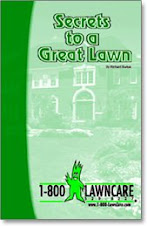
As you already know, winter has arrived, stout winter storms have taken a toll on the North Texas region, dumping record amounts of ice and snow. Not necessarily common to this region, winter storms do happen and when they do, ornamental turf grasses suffer. The biggest concern is "Winter Kill" a term often referred to by the experts as; areas of dead patchy grass, visible when the yard transitions out of dormancy, leaving dead areas, unable to green back up.
These areas can be very small or large blanket areas depending on many factors. Some factors associated with "winter kill" are as follows: Areas of constant shade, preventing dry out of moisture, low lying areas without proper drainage, poor soil, or rocky areas with shallow root systems and any area where large amounts of ice or snowfall cannot adequately evaporate.
Sometimes, small round areas are left dead, seemingly without explanation, only to discover a snowman was built and left to melt, leaving the turf underneath without the ability to recover. Areas left with large amounts of ice and snow can cause "Winter Kill" ultimately leaving stubborn areas which refuse to green up, leaving a dead or patchy appearance. Grasses left vulnerable after a hard winter, can be susceptible to diseases like "Spring Dead spot" a big problem with ornamental turf grasses.
Several methods can be used to try and circumvent the amount of area damaged by winter, follow some simple procedures to insure less area is effected.
1. Allow Lawn Tech to apply a high potassium/potash fertilizer in the fall before winter.
2. Allow Lawn Tech to perform an aeration, helping nutrients to absorb.
3. Make a final mowing before the first freeze, insuring an inch and 1/2 height, (higher is better)
4. Insure your yard drains properly, identifying problem areas.
5. Water your yard when winter dry times arrive.
6. Rake up leaves and debris, allowing your yard to dry properly.






No comments:
Post a Comment